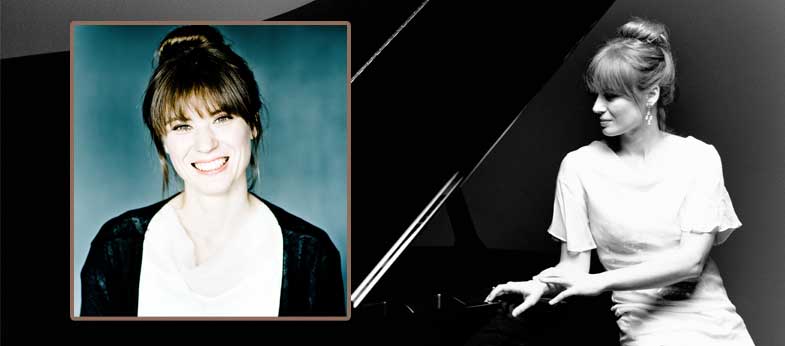
About
A superstar among next-generation classical pianists, Ukrainian Anna Fedorova has captivated fans, critics and the music world. Her performance of Rachmaninoff’s Piano Concerto No. 2 skyrocketed to more than 14 million YouTube views.
Her prizes include the International Rubinstein ‘In Memoriam’ piano competition, the Moscow International Frederick Chopin Competition for young pianists, the Lyon Piano Competition, and she is a recent recipient of the Verbier Festival Academy Award. Federova is also two-time laureate of the Dorothy MacKenzie Artist Recognition Scholarship Award at the International Keyboards Institute & Festival (New York).
Program
Program Notes
Written in 1801, the Sonata, Op. 27, No. 2 was already very popular in Beethoven’s day, exasperating the composer, who remarked to Czerny, “They are always talking about the C#-minor Sonata—surely I’ve written better things.” More than 200 years later, it remains extremely popular.
Beethoven’s title, “Sonata quasi una fantasia,” signals in part that the work does not follow Classical sonata structure, with movements in fast-slow-[fast-]fast tempos; the first movement, rather than adhering to Classical sonata form, is a moderately slow movement (“Adagio sostenuto”) in A-B-A form. Beethoven instructed that the first movement was to be played entirely senza sordini (that is, with the pedal depressed throughout—possible then without the harmonic blur that would occur on today’s instruments), accounting in part for its ghostly and nocturnal character. Critic Ludwig Rellstab remarked in 1832 that the movement reminded him of the reflected moonlight on Lake Lucerne; the work’s unofficial title, Moonlight Sonata, has adhered to it since that time. The Adagio Sostenuto movement is a comparatively light-hearted and dancelike scherzo and trio—a calm before the fiery storm of the third movement, the weightiest.
The Fantasy is one of Chopin’s greatest works for solo piano. It was composed in 1841, when Chopin was 31. In his letters, Chopin noted that he used the term fantasy to indicate some freedom from rules and to give the work a Romantic cast. The Fantasy begins with a solemn marching theme that eventually plunges into a passionate and virtuosic section in a more triumphant and positive mood. A slow, somber chorale-like section occurs about halfway through the piece before the previous section is restated. After a short, quiet, and sweet interlude, a final flourish ends the piece in the parallel major key.
The Sonata-Fantasy is in two movements, with a style that combines Chopin-like Romanticism with an impressionistic touch. It is one of Scriabin’s most popular pieces. Following the example of Beethoven’s Moonlight Sonata of nearly a hundred years before, the opening movement is slow. Scriabin’s program note for the piece reads: “The first section represents the quiet of a southern night on the seashore; the development is the dark agitation of the deep, deep sea. The E-major middle section shows caressing moonlight coming up after the first darkness of night. The second movement represents the vast expanse of ocean in stormy agitation.” The work was published in 1898 after Scriabin had worked on it for five years.
The Fantasia was written in 1782, and is one of Mozart’s more popular piano compositions despite its being unfinished at his death. The original manuscript has not survived, and the final measures of the piece have been lost or perhaps were never completed. The current ending (the last 10 measures) is believed to have been written by August Eberhard Müller, one of Mozart’s admirers. The Fantasia is unusual both for Mozart and for the Classical period in that it lacks tight structure and contains unusual rhythms and several tempo changes. It exhibits elements of several historical musical styles: Baroque (cadenza-like bridges between sections), Classical (periodic structure), and Romantic (agitated rhythm and thicker musical texture).
The Sonata No. 3 in B Minor, the last piano sonata that Chopin composed, is his most extended in structure and advanced in technical difficulty. Moments of drama and darkness appear throughout the four movements before peaceful, bel canto-like melodies clear the air, often in the key of B major. The Scherzo movement is unexpectedly short and gives way to a longer, mellow Largo that balances the Scherzo’s unusual brevity. The Finale builds tension in the tonic minor key before a second theme interrupts; the returning main theme reaches a rousing climax, followed by an ecstatic coda in the parallel major key.